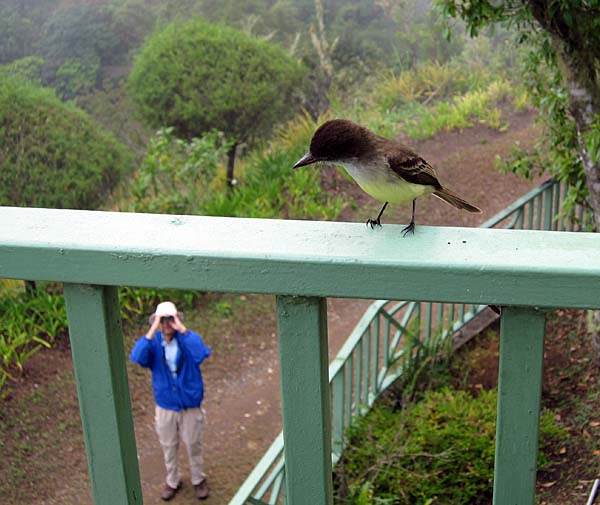Jamaica’s Endemic Birds Part 3
The next five Jamaican endemics I’ll talk about are all suboscine passerines. I’m a compulsive categorizer of everything, and it is so gratifying to know how birds sort themselves out into families and orders, if not so cleanly into species.
So if you’re not familiar with the concept of “suboscine passerine,” a very quick lesson follows. First, all birds can be sorted into passerines and non-passerines, based on genetics (but originally recognized and defined based on morphology). While passerines are a unified group of closely related birds also often called “songbirds” or “perching birds,” the term “non-passerine” is a shortcut term for lumping all other orders birds, whether they be related to each other or not. The previous two blogs in this series dealt with five different orders of non-passerines (parrots, pigeons, owls, hummingbirds, and woodpeckers), none of which are particularly close to each other. In fact, the parrots (order Psittaciformes) are now thought to be the closest relatives of the order Passeriformes.
In any event, the passerines, usually considered the most recently evolved group of birds, can also be divided neatly into two suborders – the suboscines and oscines. Jamaica has only two families of suboscines, the older lineage of songbirds, the largest diversity of which occurs in the American tropics.
Jamaican Elaenia is a good illustration of how the island was colonized by mainland species. On the mainland, there are other members of the genus Myiopagis, all quite similar in many ways to this one – the coronal stripe (often hidden), the pale edges to the wing (no wing bars), and the high-pitched, buzzy voice are all holdovers shared by Greenish, Gray, Forest, and other mainland species. On Jamaica, this bird seems to occur in almost any forest type, but it’s never common, and the inconspicuous song makes it tricky to find.
Jamaican Pewee is perhaps a little less common than the elaenia, but much more conspicuous. They are quite confiding, feeding at lower levels of the forest, and while obviously a pewee (genus Contopus), their piping song is very different from mainland species, hinting at perhaps a very long history on the island.
Sad Flycatcher is one of two Myiarchus endemic to the island and is clearly a close relative of the mainland Dusky-capped Flycatcher. Small size and the voice are very similar, and it’s one of the more common and widespread endemics. The calls actually sound quite happy or excited to my ears, so I don’t know why it was given this name.
Rufous-tailed Flycatcher, also a Myiarchus, is quite a bit more distinctive, suggesting that its ancestor arrived on the island longer ago than that of the Sad Flycatcher. The larger size and amount of rufous seem to point to a common ancestor with Great-crested Flycatcher, but the voice is radically different. It’s not quite as common as Sad Flycatcher, requiring wetter, taller forest, but is usually pretty conspicuous and not a difficult endemic to find.
Jamaican Becard is the only suboscine in the entire Caribbean not in the tyrant-flycatcher family – it’s in the relatively newly created family Tityridae, which includes the schiffornises and tityras. It’s obviously close to Rose-throated Becard, the voice being especially similar, but it’s also clearly different in plenty of ways. One can only wonder how it came to be on this island, while no other island has been successfully colonized by this genus.
Photo at top: Rufous-tailed Flycatcher is perhaps the most distinctive of the endemic suboscine passerines in Jamaica.
